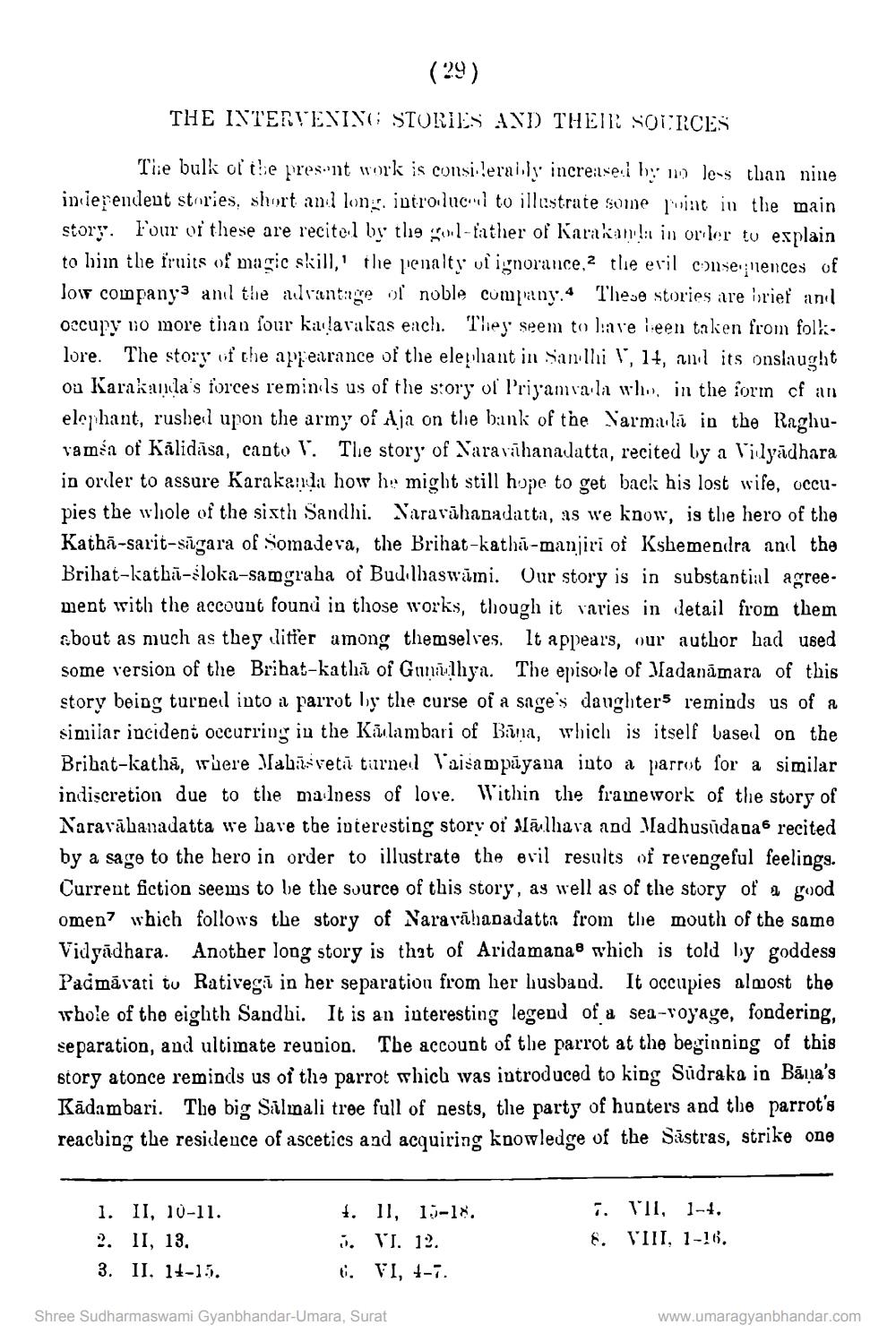________________
(29)
THE INTERVENING STORIES AND THEIR SOURCES
The bulk of the present work is considerably increased by no less than nine independent stories, short and long, introduced to illustrate some point in the main story. Four of these are recited by the gol-father of Karakanda in order to explain to him the fruits of magic skill, the penalty of ignorance,2 the evil consequences of low company and the advantage of noble company.4 These stories are brief and occupy no more than four kadavakas each. They seem to have been taken from folklore. The story of the appearance of the elephant in Sanlhi V, 14, and its onslaught on Karakanda's forces reminds us of the story of Priyamvada who, in the form of an elephant, rushed upon the army of Aja on the bank of the Narmala in the Raghuvamén of Kalidasa, canto V. The story of Naravahanadatta, recited by a Vidyadhara in order to assure Karakanda how he might still hope to get back his lost wife, occupies the whole of the sixth Sandhi. Naravahanadatta, as we know, is the hero of the Katha-sarit-sagara of Somadeva, the Brihat-katha-manjiri of Kshemendra and the Brihat-katha-sloka-samgraha of Budilhaswami. Our story is in substantial agreement with the account found in those works, though it varies in detail from them about as much as they differ among themselves. It appears, our author had used some version of the Brihat-katha of Gunahya. The episode of Madanamara of this story being turned into a parrot by the curse of a sage's daughters reminds us of a similar incident occurring in the Kadambari of Bana, which is itself based on the Brihat-katha, where Mahasvetä turned Vaisampayana into a parrot for a similar indiscretion due to the madness of love. Within the framework of the story of Naravahanadatta we have the interesting story of Madhava and Madhusudanas recited by a sage to the hero in order to illustrate the evil results of revengeful feelings. Current fiction seems to be the source of this story, as well as of the story of a good omen which follows the story of Naravahanadatta from the mouth of the same Vidyadhara. Another long story is that of Aridamana which is told by goddess Padmavati to Rativega in her separation from her husband. It occupies almost the whole of the eighth Sandhi. It is an interesting legend of a sea-voyage, fondering, separation, and ultimate reunion. The account of the parrot at the beginning of this story atonce reminds us of the parrot which was introduced to king Sudraka in Bana's Kādambari. The big Salmali tree full of nests, the party of hunters and the parrot's reaching the residence of ascetics and acquiring knowledge of the Sastras, strike one
1. II, 10-11.
2. II, 13.
3. II. 14-15.
4. 11, 15-18.
5. VI. 12.
6. VI, 4-7.
Shree Sudharmaswami Gyanbhandar-Umara, Surat
7. VII, 1-4.
8. VIII, 1-16.
www.umaragyanbhandar.com




